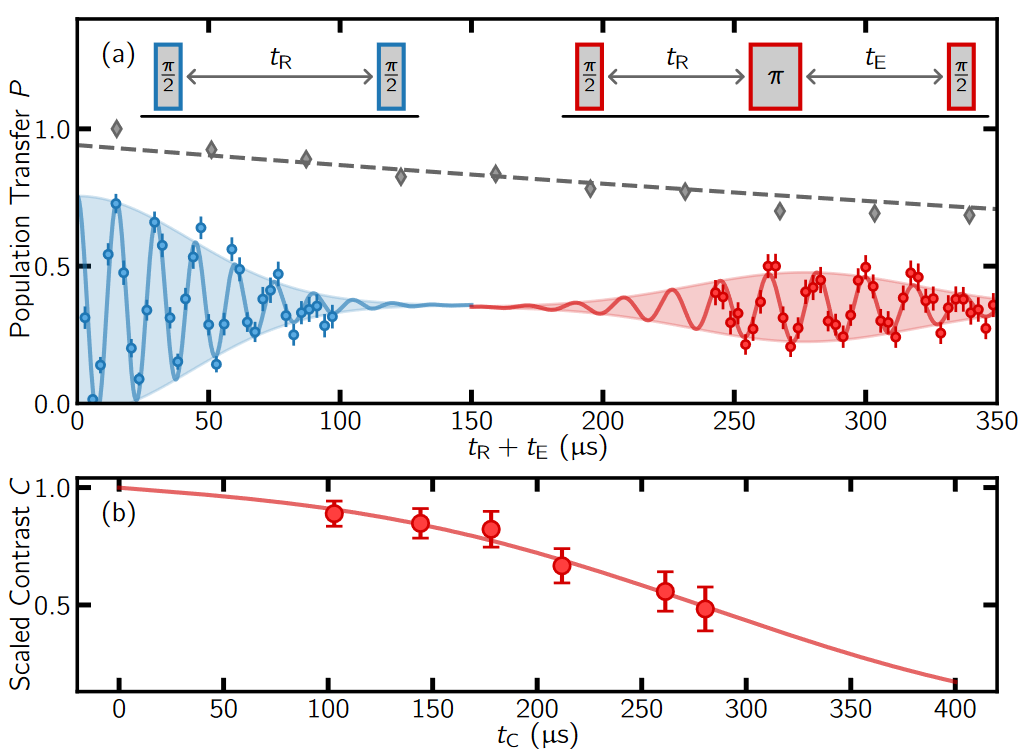In the CiRQus project, we have demonstrated the first trapped circular Rydberg atoms of Strontium. Coherence time and gate fidelities in Rydberg atom quantum simulators and computers are fundamentally limited by the Rydberg state lifetime. Circular Rydberg states are highly promising candidates to overcome this limitation by orders of magnitude, as they can be effectively protected from decay due to their maximum angular momentum. Alkaline-earth metal atoms are particularly promising in this context, as they feature an additional optically active electron, which provides a completely new toolbox for manipulation and detection.
In our recent manuscript, we report the first realization of Strontium circular Rydberg atoms trapped in optical tweezers. We demonstrate a microwave qubit encoded in nearby circular states, and characterize its coherence time via Ramsey and spin-echo spectroscopy. Ultimately, we measure Rydberg lifetimes as long as 2.55 ms at room temperature without any cryo-cooling, which is achieved via cavity-assisted suppression of black-body radiation. Our work opens routes for quantum simulations with long-lived circular Rydberg states of divalent atoms, exploiting the full emergent toolbox associated with their optically active core ion.
